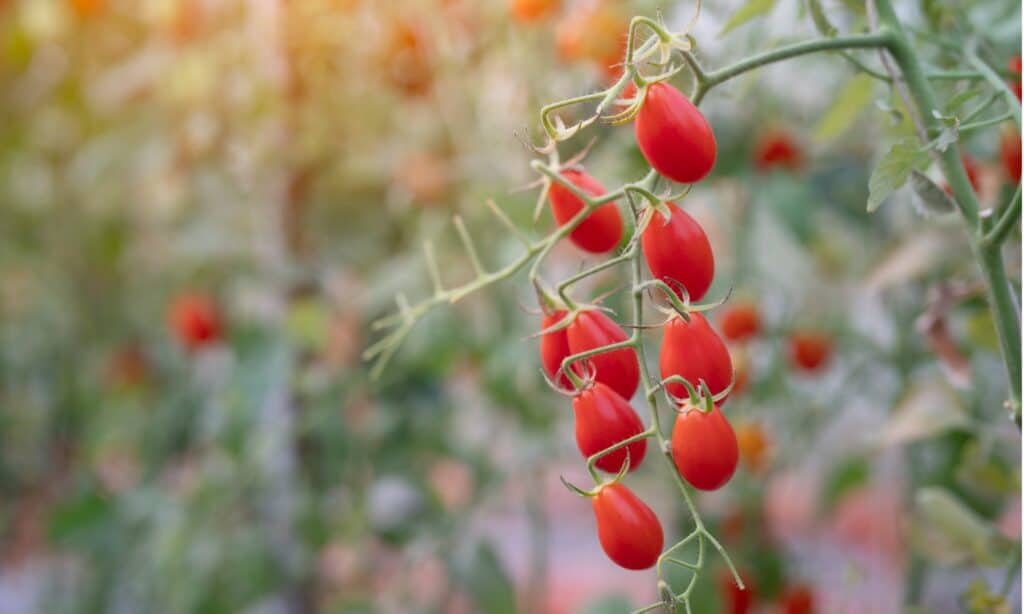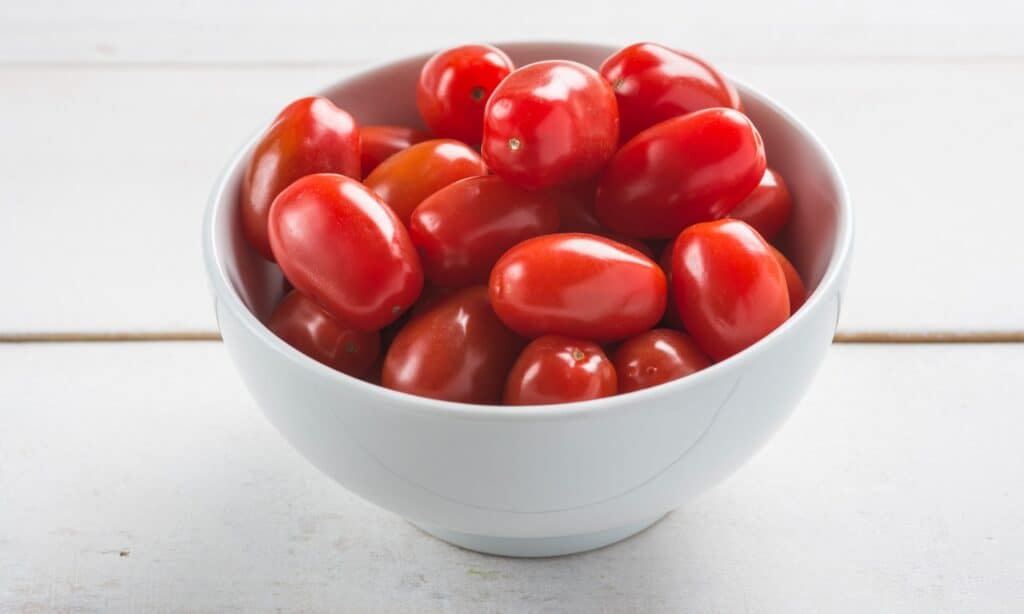If you’ve ever eaten a tomato from the grocery store, you are aware of how tasteless and bland it can be. This is because supermarket tomatoes undergo genetic modification to improve traits, including increased fruit production per plant, more balanced ripening, and durability for long-distance shipping. But in the process, the taste gets compromised. Freshly picked vegetables from your garden will always taste better than those from the supermarket. However, the biggest problem for Texas tomato growers is knowing when to plant. If you place them out too early, they can freeze. If you put them out too late, your plants won’t have time to bear fruit before it gets too hot. So, when exactly is the best time to plant tomatoes in Texas, and what are some tips to achieve that juicy harvest?
The high success rate of tomatoes—not to mention their deliciousness—makes them a preferred crop when trying to grow your own edible food. Tomatoes are delicate warm-season crops that adore the sun but cannot withstand frost. Due to Texas’ size, there are various planting timetables across the state; you can plant sooner the farther south you go. This article will look at the best time to plant tomatoes and other interesting facts.
When is the Best Time to Plant Tomatoes in Texas?

In Texas, it is generally safe to plant your tomatoes outside after one to two weeks without a frost.
©iStock.com/ittipon2002
As you may have already suspected, you must carefully monitor your local weather in the spring and pay close attention to the last frost date in particular. In Texas, it is generally safe to plant your tomatoes outside after one to two weeks without a frost or when the temperature remains in the mid-50 degree range both day and night. Unfortunately, Mother Nature teases us every year. Some years, the last frost arrives later. Other times, you can grow your tomatoes sooner because the final frost occurs much earlier. As previously stated, you must monitor your local weather consistently.
While tomatoes are tropical plants that require warmth to thrive, they do not tolerate the extreme heat in Texas. Because the state’s summers are so hot, there are two tomato-growing seasons: spring and fall. Your spring-planted tomatoes should start fruiting before the warmer weather arrives for the best yield. It’s basically a race. The earlier you can plant them while still protecting them from the winter, the better. A fall crop can also be highly prolific; begin with new transplants in July, and when they are completely grown in September, temperatures will begin to cool, and fruit will form.
Here are 8 tips that will surely help you grow those juicy and tasty tomatoes effectively:
1. Choose the Right Tomato Size

Larger tomatoes take longer to ripen compared to smaller ones.
©iStock.com/angelsimon
Fruit size is also important for how many tomatoes your plants produce. Larger fruits, like the Beefsteak, take 96 days to ripen, while the little Supersweet 100 only takes 65 days. Because plants cease producing when temperatures rise, those that produce smaller fruits generate more tomatoes than plants that produce bigger fruits.
If you don’t have enough space in your garden or are growing tomatoes in containers, a determinate or dwarf type may be preferable over a leggy indeterminate. Determinate tomatoes only grow to a fixed size and yield their entire crop in around three weeks, and they are then finished for the year, which is ideal if you want to can or freeze tomatoes regularly. Dwarf tomatoes are grown specifically for small gardens and are popular in small backyards, patios, and apartment balconies.
2. Make Sure Your Soil is Healthy
Before planting, check your soil and make the necessary amendments to boost soil calcium and balance any other deficiencies. Tomatoes thrive in soil rich in organic materials. Mix fresh compost into the top four to six inches of garden soil. Depending on the health and structure of your soil, you may wish to add mineral-rich Texas greensand, which contains critical components like calcium and iron. Adding expanded shale or lava sand will aid moisture retention and loosen heavy soil. Consistent watering can cure tomato cracking or blossom end rot caused by calcium deficiency. Set up soaker hoses or drip irrigation with timers to provide an inch of water to the garden once a week.
3. Harden Off Your Tomato Plant
Allow your tomato plants three to five days to adapt to the outdoors by placing them in a safe spot, such as beneath a porch awning, where they will be protected from strong winds and drying out but where they will have a chance to get used to the outdoors. Some gardeners refer to this as “hardening off,” strengthening its resistance to diseases, insects, droughts, and wet conditions. During this period, remember to water them as needed.
Plant your own seeds 1/4 inch deep and 1 inch apart in flats positioned in a warm, sunny environment. Transplant the seedlings into plastic containers once they have grown their second set of leaves (the first true leaves), burying the stems deeper than before. This promotes a robust root system. If you purchase transplants from a nursery, you should also allow them to develop a strong root system before planting.
4. Water and Fertilize Consistently
Water the tomato plants gently and thoroughly to encourage the development of a robust root system. Allowing the tomatoes to wilt significantly will result in low yields and poor fruit quality. Pour the water straight onto the soil, not the foliage.
When the first fruit is ripening, add compost to encourage new growth. A weak fish emulsion fertilizer can also be beneficial but avoid overfeeding. Too much nitrogen than what is needed will make your tomato plants lush over time but less productive.
5. Create a Layer of Protection
Texas weather can sometimes be unpredictable, with temperatures ranging from 75 degrees on Monday to 30 degrees on Tuesday. As a result, Texas fall vegetable growers must be ready to safeguard sensitive plants during a cold spell. Watering the soil first will assist in cooling the soil more slowly by replacing air pockets with water.
Small plants can be protected using pots, while larger areas can be shielded with insulating row covers like frost cloth. It is best to keep the cover away from the plant’s leaves. A hoop house draped with frost cloth is reasonably simple to construct and offers 6 to 8 degrees of protection. Also, note that plastic does not provide additional defense to plants.
6. Tomato Plants Should Be Staked and Pruned
Fasten the stems of your tomato plants to stakes or cages for support. By leaving the vines on the ground, they become more vulnerable to pests and diseases. Stakes 5 to 7 feet long should be put around 7 inches into the earth. If you can’t find cages that are large enough or strong enough, you can create your own out of welded wire mesh from a hardware store. Just make sure your hand fits through the squares!
Pruning your tomato plants regularly will boost fruit production. Begin by removing any suckers—little shoots that emerge from the stems—as soon as possible. This assists the plants in remaining upright, improving air circulation, and producing more fruit. While caged tomatoes can produce one or two suckers, staked tomatoes perform best when grown as a single stem. Try to clip (or pluck with your fingers) any visible suckers every few days.
7. Prevent Insects and Other Pests from Destroying Your Tomatoes
Tomatoes are vulnerable to pests, most commonly the tomato hornworm and spider mites. The hornworm is the larval stage of the hawk moth and may completely destroy a plant in an instant. Spider mites typically appear later in the season. The mites form more visible webs near the tips of the leaves, which are barely visible to the naked eye. Neem oil can be used to treat both, but be cautious not to spray the bees!
If you enjoy tomatoes, the critters in and around your garden do as well. Animal troubles vary depending on whether you live in the city or the countryside, and raccoons and rats are among your problems. Some critters can be prevented by fencing, while others must be trapped and removed.
8. Harvest at the Right Time

Tomato harvest durations range from about 50 days to about 96 days.
©iStock.com/Grahamphoto23
To determine the best harvest days, read each transplant’s information. Tomato harvest durations range from about 50 days for a few kinds to about 96 days, with many maturing around 70 days.
Some gardeners prefer to pick their tomatoes when they are fully ripe, but if pests, such as grasshoppers, birds, or other insects, are a problem, you can pick the tomatoes when they are just beginning to turn color and allow them to fully ripen on an indoor sunny window ledge away from pests that would bite into them. They can be refrigerated once they have reached full color because, if not, the flavor will be compromised.
Tomatoes aren’t the easiest plants to grow, but they’re so delicious that the extra effort is well worth it. Indeed, one of the finest things in life is a fresh-from-the-garden tomato.
Up Next:
Grape Tomato vs Cherry Tomato: Is There a Difference?
Will Cicadas Eat My Tomato Plants?
Can Dogs Eat Tomatoes, Are They Poisonous or Safe?
The photo featured at the top of this post is © iStock.com/Grahamphoto23
Sources
- Gardening Know How, Available here: https://www.gardeningknowhow.com/garden-how-to/garden-by-region/south-central/tomato-growing-in-south-central-states.htm
- The Gardening Dad, Available here: https://thegardeningdad.com/best-time-to-plant-tomatoes-in-texas/
- Marshall Grain, Available here: https://www.marshallgrain.com/post/how-to-grow-tomatoes
Thank you for reading! Have some feedback for us? Contact the AZ Animals editorial team.







